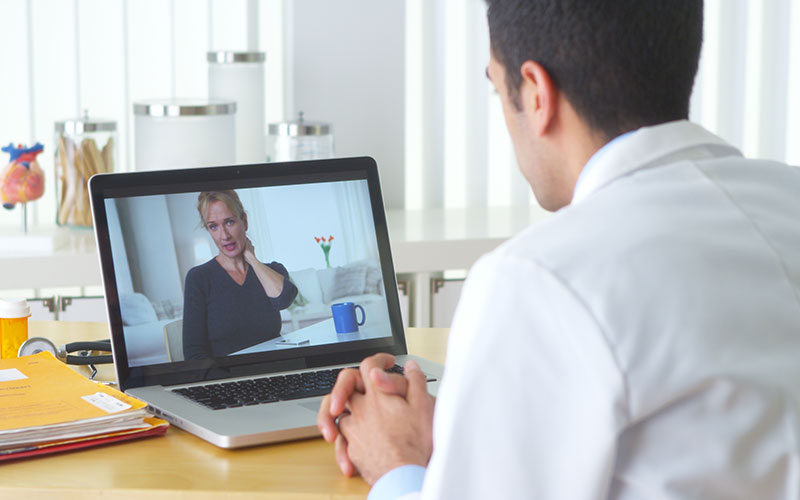Click here to receive a FREE temporary Vidyo license. Connect remotely at no cost – no strings attached.
Over the past decade, technology has made great contributions to healthcare by empowering physicians with better tools and patients with improved care. Telehealth technologies — digital health records, robotics, wearables, telehealth video conferencing, and smartphones — have enabled patients to receive an evaluation, diagnosis, and care remotely.
In addition to improving healthcare options for those suffering from chronic disease, acute injuries and illnesses, or require urgent care, telehealth also has applications during times of increased public health concern. This includes the annual flu season, but also infectious disease epidemics like the coronavirus now plaguing China and threatening to spread elsewhere.
We will briefly explain the coronavirus and the telehealth benefits for infectious disease diagnosis and prevention.
What Is Coronavirus and How Do You Prevent It?
The coronavirus now linked to deaths in China, officially named COVID-19, is part of the zoonotic CoV family of viruses that can spread from animals to humans and between people. Symptoms include fever, cough, shortness of breath, and difficulty breathing. Severe cases can cause pneumonia, severe acute respiratory syndrome, kidney failure, and ultimately death.
Although the disease is dangerous to anyone who contracts it, in general, only the elderly or those with pre-existing conditions have complications that lead to death. There is currently no vaccine for the virus, and the best way to stay healthy is to avoid exposure.
The CDC recommends the following coronavirus prevention tips:
- Avoid close contact with people who are sick.
- Avoid touching your eyes, nose, and mouth with unwashed hands.
- Wash your hands often with soap and water for at least 20 seconds, especially after using the bathroom, before and after eating, after blowing your nose, coughing, or sneezing.
- Stay home when you are sick.
- Cover your cough or sneeze with a tissue, then throw the tissue in the trash.
- Clean and disinfect frequently touched objects and surfaces using a regular household cleaning spray or wipes.
- Wear a face mask when you are sick, or when you are taking care of others who are sick.
Due to the restrictions of time, distance, budget, and the availability of experts, it is not always possible for you to schedule patients for an on-site consultation in a timely fashion. Telehealth can make a difference in instances like these.
Infectious Disease and Coronavirus Telehealth Applications
According to a recent study we conducted here at Vidyo, 60% of large healthcare providers are already using a telehealth solution and plan to upgrade its functionality. Eighty-five percent of those not using live video or remote patient monitoring plan to begin doing so in the near future. Meanwhile, those using telehealth solutions reported a 35% improvement in patient outcomes.
Two key areas highlighted by the Infectious Disease Society of America that could benefit from telemedicine are infection prevention and control and better patient-provider connection.
Under the current circumstances of a shortage of physicians and specialists — especially in rural communities — telehealth can provide the prompt care required to reduce the spread of infectious disease. Also, telehealth infectious disease (ID) consultations can reduce in-patient time following a diagnosis. According to a study published in the Infectious Disease Advisor, out of 244 patients, those that had first received a telehealth ID consultation decreased the amount of time they spent in the hospital.
When a virus outbreak occurs, diagnosing patients promptly, minimizing travel time, and reducing public exposure helps to curb the rate of infection. Telehealth consultations are a means to achieve these ideal care conditions.
What Does a Telehealth Consultation Look Like In Practice?
At , our telehealth platform was built for the healthcare industry. With enterprise-grade video quality and HIPAA-compliant privacy, physicians can schedule remote consultations with patients with ease and peace of mind.
Mediums for consultation include:
- Text chat
- Call center applications
- Desktop application
- Web browser
- A Vidyo room
- Virtual meeting room
- And more
Remote patient treatment and care can empower you to make better use of your resources, control costs, catch illnesses early, and improve your patient’s outcomes. All this translates to a healthier public, more satisfied patients, and a more profitable practice.
Click here to receive a FREE temporary Vidyo license. Connect remotely at no cost – no strings attached.
